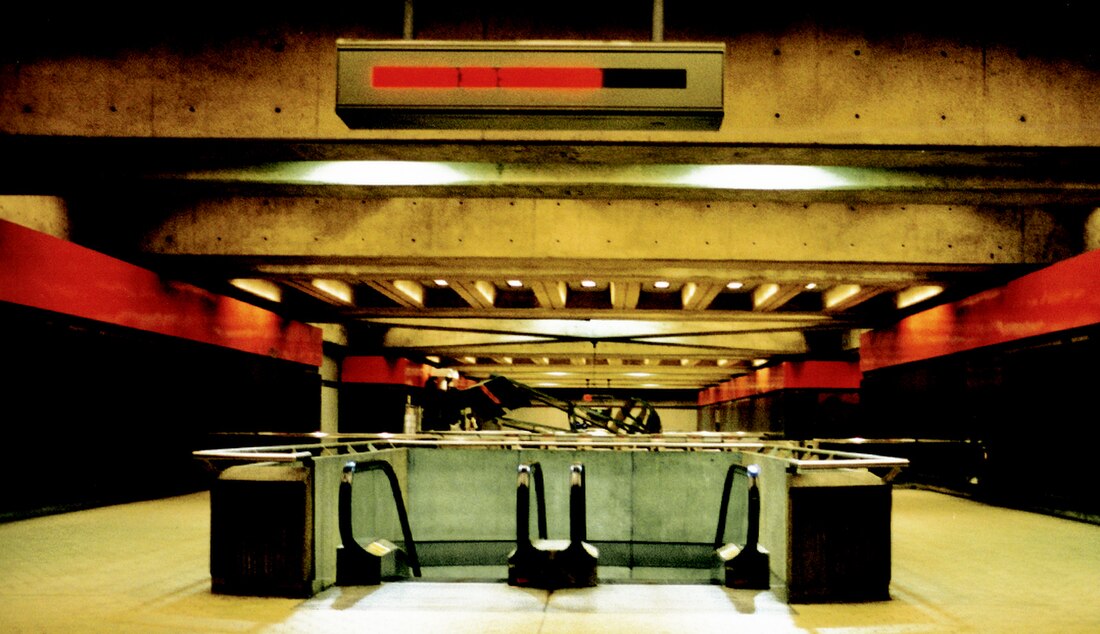State Center station
Baltimore Metro SubwayLink station From Wikipedia, the free encyclopedia
State Center station (formerly State Center/Cultural Center station) is an underground Baltimore Metro SubwayLink station in Baltimore, Maryland. It is a transit hub offering connections to the Baltimore Light RailLink system, the tenth most northern and western station on the line, the first one in the area viewed by many as "downtown Baltimore," and is within a 2 block walk of the Cultural Center station on the Light RailLink system, via Preston Street, and many area landmarks.
State Center | |||||||||||
|---|---|---|---|---|---|---|---|---|---|---|---|
| Metro SubwayLink station | |||||||||||
 Mezzanine at the State Center station | |||||||||||
| General information | |||||||||||
| Location | 302 West Preston Street (Preston and Eutaw Streets) Baltimore, Maryland | ||||||||||
| Coordinates | 39.30158°N 76.62299°W | ||||||||||
| Owned by | Maryland Transit Administration | ||||||||||
| Tracks | 2 | ||||||||||
| Connections | Light RailLink (at Cultural Center station) MTA Maryland Buses | ||||||||||
| Construction | |||||||||||
| Accessible | Yes | ||||||||||
| History | |||||||||||
| Opened | November 21, 1983 | ||||||||||
| Previous names | State Center/Cultural Center (1983–2017) | ||||||||||
| Passengers | |||||||||||
| 2017 | 1,661 daily[1] | ||||||||||
| Services | |||||||||||
| |||||||||||
| |||||||||||
The stations elevator and escalator entrance is located on the corner of West Preston Street and North Eutaw Street which is directly adjacent to the Maryland States Office Complex, hence the name "State Center." It is within the boundaries of the Madison Park neighborhood and is also very close to the adjacent neighborhoods of Bolton Hill, Mid-Town Belvedere, Mount Vernon, and Seton Hill.

Artwork

State Center station features a mobile sculpture entitled "Venter," which is suspended in a large opening between its upper and lower level. The sculpture was created by Baltimore artist Paul Daniel at a $39,000 commission in 1983.[2]
History
State Center station was initially referred to as the Bolton Hill station during its planning and construction, in reference to the adjacent neighborhood to the site's north.[3]
Excavation and construction
The Bolton Hill tunnels constructed around State Center station were driven with a shield through Cretaceous alluvium and through mica schist-derived residual materials. Hand mining was required to advance the face of the tunnel in some areas where the alignment passed through more resistant, hard residual materials.[4]
References
External links
Wikiwand in your browser!
Seamless Wikipedia browsing. On steroids.
Every time you click a link to Wikipedia, Wiktionary or Wikiquote in your browser's search results, it will show the modern Wikiwand interface.
Wikiwand extension is a five stars, simple, with minimum permission required to keep your browsing private, safe and transparent.

